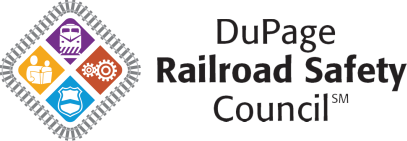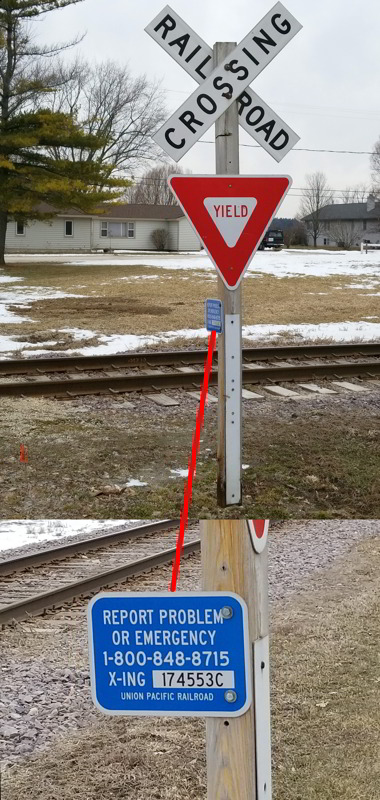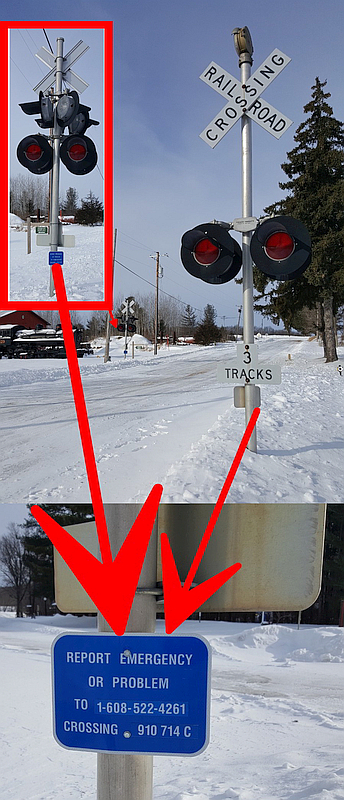How
At virtually every highway-railroad grade crossing and pathway crossing a blue and white Emergency Notification Sign is posted at each approach to the crossing. This sign is posted on the warning device or a post at the crossing. The sign may be either parallel or perpendicular to the railroad tracks. Each railroad has their own phone number and each crossing has a unique “address”—six digits and a letter. Give this information over the phone. (These land-line phones do not accept texting.) For railroads that operate all day every day—after possibly going through a voice mail filter—you will be talking with the railroad dispatcher or his or her assistant. The six-digits-and-a-letter give them an exact location. They can radio the engineers of nearby trains to immediately stop short of that crossing and notify signal maintainers to repair malfunctioning warning devices.
Why call the railroad before 911 if no collision is imminent?
The railroad can take immediate action as mentioned above. The standard procedure for many police departments would be for 1) the police department dispatcher to radio an officer to inspect the scene, 2) the officer confirms the problem and the problem location, and 3) the officer radios to police dispatcher to call the railroad to report the problem. An officer who confirms the problem and location might be prevented by procedures to call the railroad directly with the information on the blue and white sign. Whether this process takes 30 seconds or 5 minutes, any nearby trains are rapidly approaching the crossing before the engineers are contacted.
Who
If a collision is not imminent, motorists, pathway users (e.g., pedestrians and bike path users), and bystanders should contact the railroad first—before calling 911—to report the following problems:
What
- A malfunction of a warning device at a highway-railroad grade crossing or pathway crossing (e.g., pedestrian crossing or bike path crossing).
- A disabled vehicle on the tracks at a highway-railroad grade crossing or other obstruction at a highway-railroad grade crossing or pathway crossing.
- An obstruction blocking the clear view of approaching trains for a reasonable distance in both directions at a highway-railroad grade crossing or pathway crossing.
- Any other unsafe condition affecting the highway-railroad grade crossing or pathway crossing.
Here are some other examples: (Click to enlarge.)
Metra_920589U
The blue and white sign at a pathway crossing—in this case, a mid-platform train station pedestrian crossing. The sign is parallel to the train tracks.
UP_174553C
A blue and white sign at a crossing protected by a crossbuck. Note the sign is cross-wise (at right angles) to the train tracks.
CP_388059N
Note that each railroad has its own telephone number. Note that both this Canadian Pacific ENS sign and the Metra sign leading this article are on the Metra Milwaukee District North line since the CP controls the line north of Rondout, IL.





